|
The
Louvre Museum II
Article written by Rick Archer,
May 2007
|
|
|
|
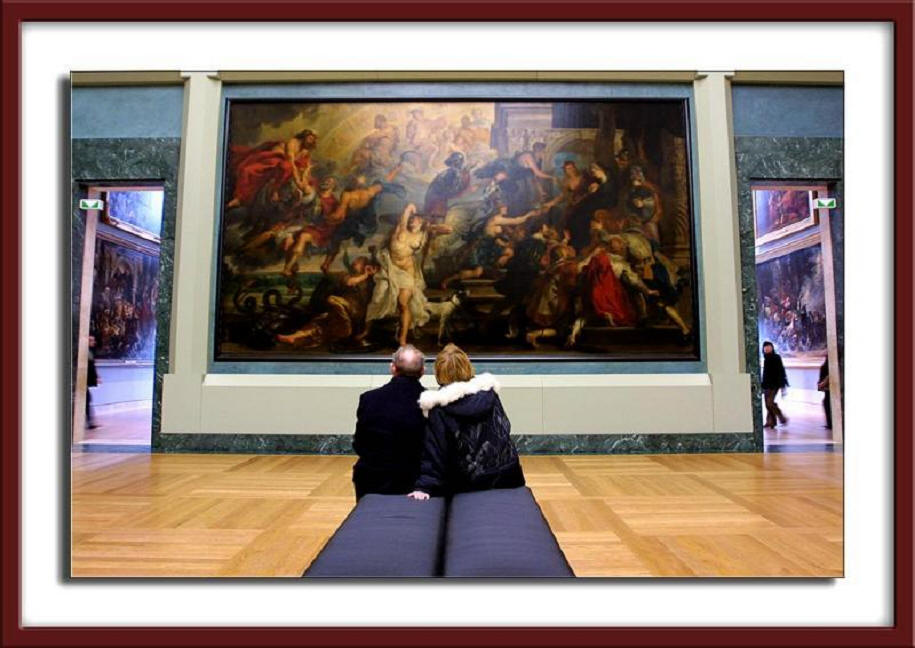 |
003. The Apotheosis of Henry IV and the
Proclamation of the Regency of Marie de Medicis
May 14, 1610 by Peter Paul Rubens (title contributed
by Lourdes Fernandez)
The Death of Henry
IV and the Proclamation of the Regency,
(from
the Marie de' Medici Cycle),
1625, Peter Paul Rubens (1577-1640)
(Title contributed by Olga Milner)
|
|
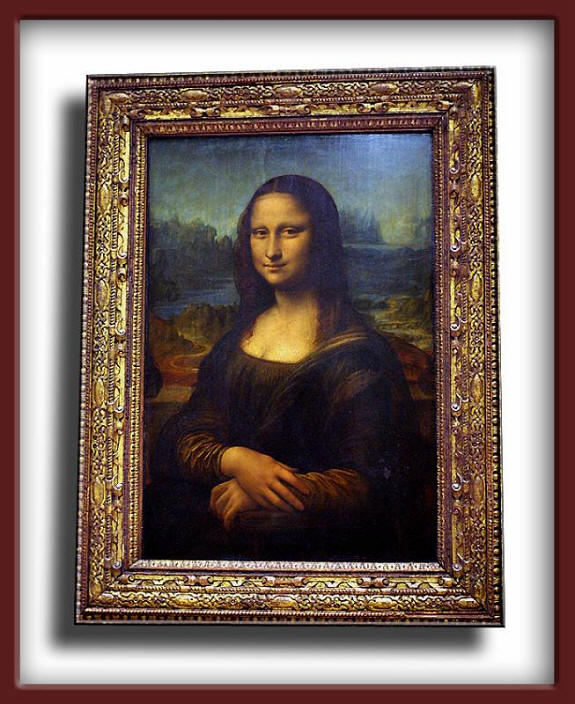 |
004.
Mona Lisa, or La Gioconda, is a 16th century oil
painting on poplar wood by Leonardo
da Vinci.
It is one of the most famous
paintings in the world. Few works of art have been subject
to as much scrutiny, study, mythologizing and parody. It is
owned by the French government and hangs in the Musée du
Louvre in Paris. The painting, a half-length portrait,
depicts a woman whose gaze meets the viewer's with an
expression often described as enigmatic.
Leonardo da Vinci began painting the Mona Lisa in 1502 and,
according to Vasari, completed it in four years. Leonardo
took the painting from Italy to France in 1516 when King
François I invited the painter to work at the Clos Lucé near
the king's castle in Amboise. The King bought the painting
for 4,000 écus and kept it at Fontainebleau, where it
remained until moved by Louis XIV.
Louis XIV moved the painting to the Palace of Versailles.
After the French Revolution, it was moved to the Louvre.
Napoleon I had it moved to his bedroom in the Tuileries
Palace; later it was returned to the Louvre. During the
Franco-Prussian War of 1870–1871, it was moved from the
Louvre to a hiding place elsewhere in France.
The painting was not well-known until the mid-19th century,
when artists of the emerging Symbolist movement began to
appreciate it, and associated it with their ideas about
feminine mystique. Critic Walter Pater, in his 1867 essay on
Leonardo, expressed this view by describing the figure in
the painting as a kind of mythic embodiment of eternal
femininity, who is "older than the rocks among which she
sits" and who "has been dead many times and learned the
secrets of the grave".
The painting's increasing fame was further emphasized when
it was stolen on August 21, 1911. The next day, Louis Béroud,
a painter, walked into the Louvre and went to the Salon
Carré where the Mona Lisa had been on display for five
years. However, where the Mona Lisa should have stood, he
found four iron pegs.
Béroud contacted the section head of the guards, who thought
the painting was being photographed. A few hours later,
Béroud checked back with the section head of the museum, and
it was confirmed that the Mona Lisa was not with the
photographers. The Louvre was closed for an entire week to
aid in the investigation of the theft.
On September 6, avant-garde French poet Guillaume
Apollinaire, who had once called for the Louvre to be
"burned down", was arrested and put in jail on suspicion of
the theft. His friend Pablo Picasso was brought in for
questioning, but both were later released.
At the time, the painting was believed to be lost forever.
It turned out that Louvre employee Vincenzo Peruggia stole
it by entering the building during regular hours, hiding in
a broom closet and walking out with it hidden under his coat
after the museum had closed.
Con-man Eduardo de Valfierno master-minded the theft, and
had commissioned the French art forger Yves Chaudron to make
copies of the painting so he could sell them as the missing
original. Because he did not need the original for his con,
he never contacted Peruggia again after the crime. After
keeping the painting in his apartment for two years,
Peruggia grew impatient and was caught when he attempted to
sell it to a Florence art dealer; it was exhibited all over
Italy and returned to the Louvre in 1913.
During World War II, the painting was again removed from the
Louvre and taken to safety, first in Chateau Amboise, then
in the Loc-Dieu Abbey and finally in the Ingres Museum in
Montauban.
In 1956, the lower part of the painting was severely damaged
when someone doused it with acid. On December 30 of that
same year, Ugo Ungaza Villegas, a young Bolivian, damaged
the painting by throwing a rock at it. The result was a
speck of pigment near Mona Lisa's left elbow. The painting
is now covered with bulletproof security glass.
In 1962, the painting was assessed
for insurance purposes at $100 million. According to the
Guinness Book of Records, this made
the Mona Lisa the most valuable painting ever insured.
|
|
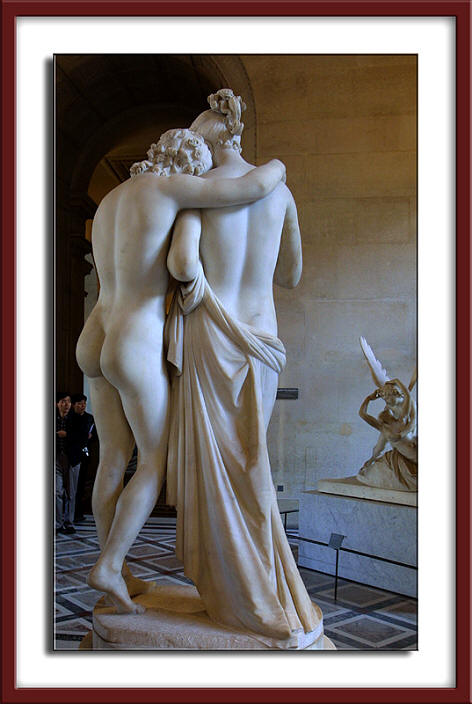 |
005.
Cupid and
Psyche
Antonio CANOVA (Possagno,
1757 – Venice, 1822)
c. 1797
Title of picture
contributed by Anna Anderson, February 2011
|
|
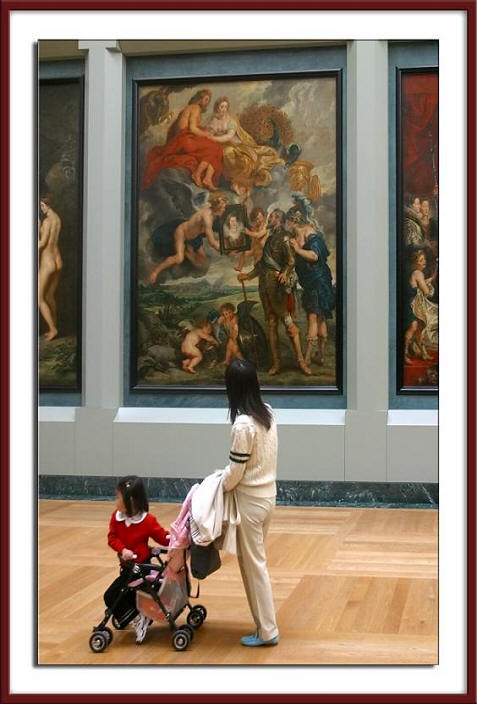 |
006.
The Presentation
of Her Portrait to Henri IV,
(from
the Marie de' Medici Cycle), 1625, Peter Paul Rubens
(1577-1640)
|
|
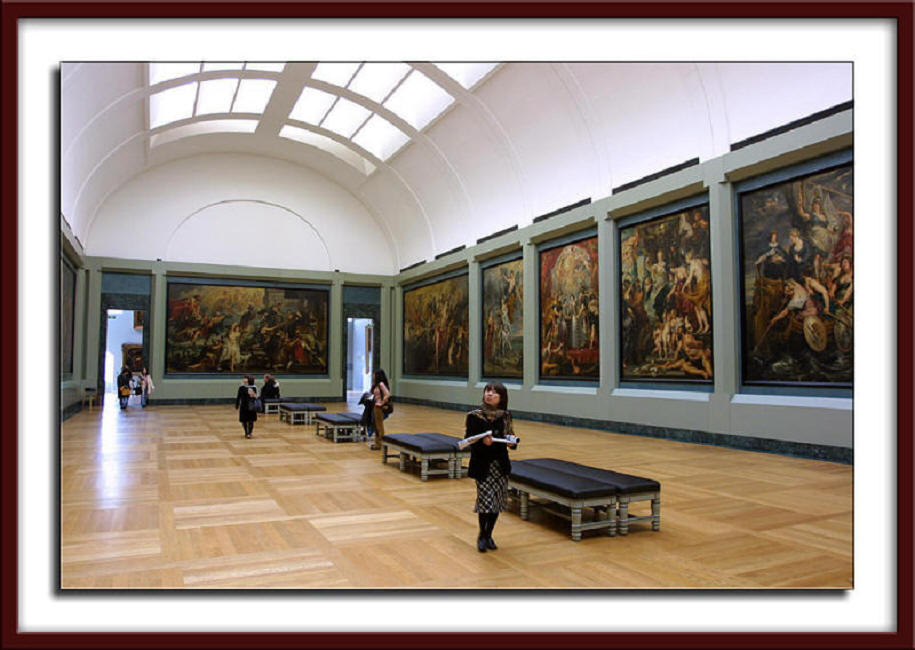 |
|
|
|
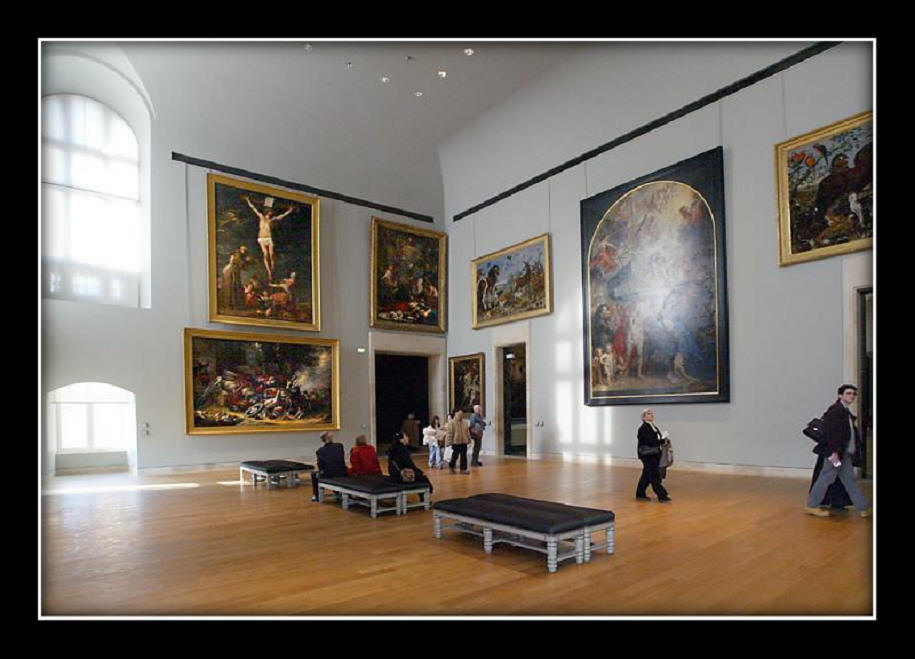 |
|
|
|
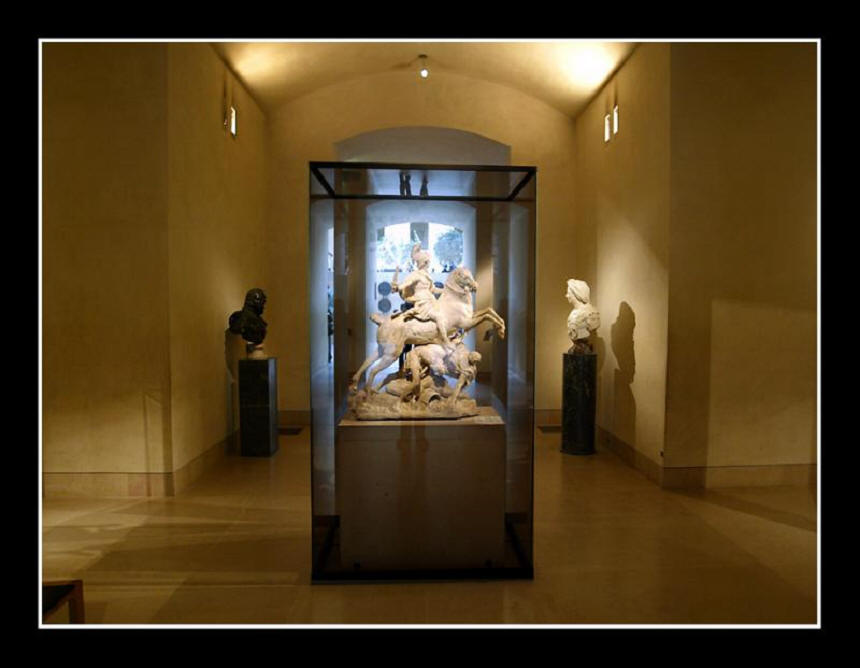 |
007. Does anyone know the name of the
statue above?
|
|
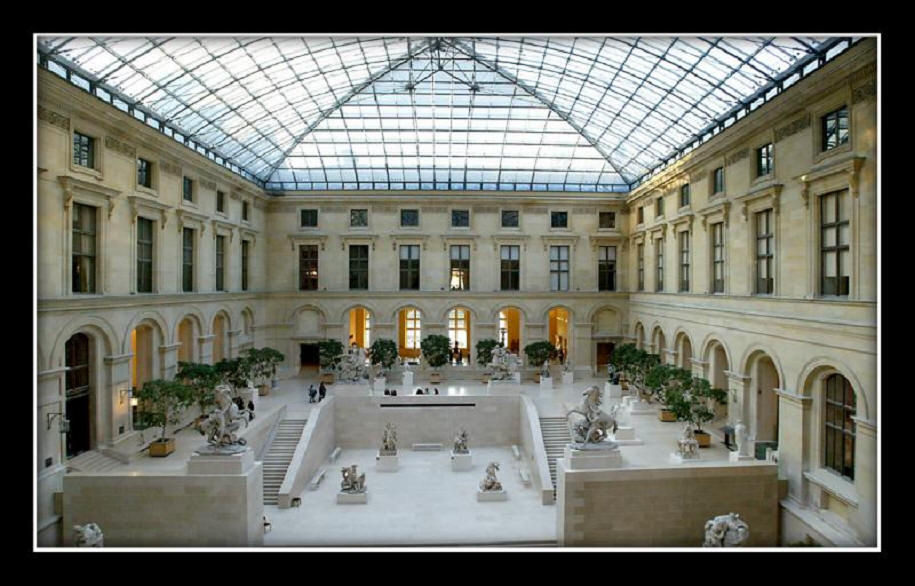 |
| |
|
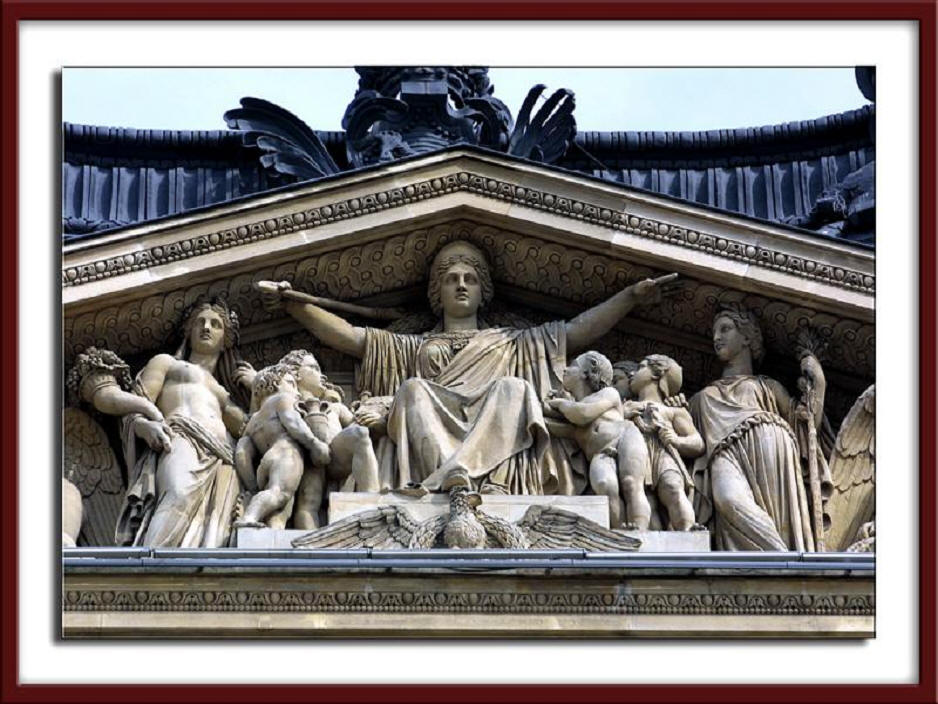 |
008. Does anyone know the name of the
statue above?
|
|
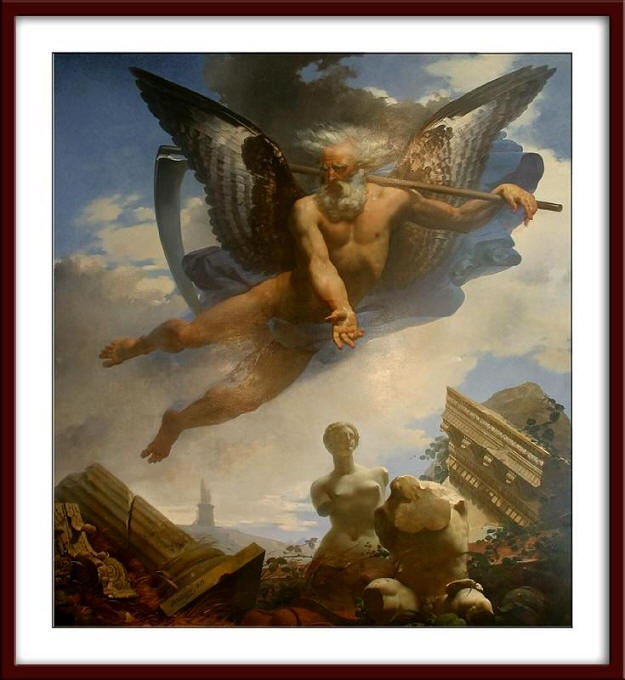 |
009. Does anyone know the name of the
painting above?
|
Next Page:
Louvre III
|
|